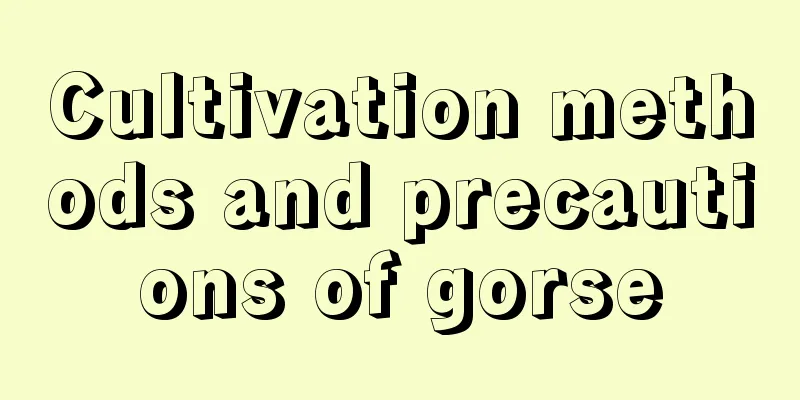Cultivation methods and precautions of bicolor jasmine

|
Jasmine bicolor is a plant that can be grown in the ground or in pots in southern China. In the Yangtze River Basin and areas north of it, it is usually planted in pots because it needs to be brought indoors in winter. Let’s learn about the cultivation methods and precautions of bicolor jasmine . 1. Pot soil selection Choose a pot with a diameter of 10cm to 50cm according to the size of the plant, preferably a clay pot to ensure good permeability. Avoid using clay soil to prevent root rot. Use a mixture of leaf mold, garden soil and sand in a ratio of 5:3:2 to keep the soil loose, fertile and slightly acidic. Repot and change the soil every 1 to 2 years in early spring, retaining some of the old soil. 2. Water and fertilizer management Bicolor jasmine likes moisture but is afraid of waterlogging. It needs to be sprayed and watered frequently during its vigorous growth period from April to September to keep the soil in the pot moist but not waterlogged. Reduce watering from October and keep the soil in the pot slightly dry in winter. Apply nitrogen, phosphorus and potassium compound fertilizer every 10 to 15 days during the growing season to avoid applying nitrogen fertilizer alone which will cause excessive growth of branches and leaves. Apply phosphorus and potassium fertilizers before winter, and suspend fertilization from winter to February of the following spring. 3. Temperature and light Bicolor jasmine likes plenty of sunlight and warm and humid climate. The suitable growth temperature is 15℃ to 32℃. During the growing period, it should be placed in a sunny place. Long light hours will help the plant to be strong and the flowers to bloom luxuriantly. Provide appropriate shade at noon in midsummer and move it indoors when the temperature drops below 5℃ in winter. 4. Pruning and shaping The bicolor jasmine cultivated at home should not be over-pruned, and a round crown of 30cm to 40cm high should be maintained. In early spring, heavy pruning should be carried out in conjunction with repotting and changing the soil. After flowering, the remaining flowers should be cut off in time, and the overgrown branches and inner branches should be removed. 5. Reproduction method It is mainly propagated by pole cuttings and high pressure, combined with pruning in spring and autumn. Choose strong branches, dip them in rooting powder or VB12, and insert them into plain sandy soil, maintaining high humidity and appropriate temperature. For high-pressure propagation, choose two-year-old strong branches, peel the bark in a ring, cover the wound with moss and leaf mold, and keep it moist until roots take root. The above are the key points for potted cultivation of bicolor jasmine. There are many varieties of jasmine, and bicolor jasmine is more popular now. Have you ever raised it?
|
<<: Goose breeding technology and management
>>: Silkworm breeding methods and precautions
Recommend
When and how to plant chrysanthemum
Planting time of chrysanthemum Chinese cabbage is...
The role of honeysuckle leaves
It has the effect of clearing away heat and detox...
How to grow Jade Plant in autumn
1. Sufficient water For Jade Plant, its growth pe...
When is the best time to sow oil tea?
Tea tree sowing time Camellia oleifera, also know...
How to propagate millet grass through sowing
Seed propagation of eyebright grass Seed selectio...
Does Cycas revoluta prefer shade or sun?
Does Cycas revoluta prefer shade or sun? Cycas is...
Is Pink Lady Bougainvillea a frequent bloomer?
The Pink Lady Bougainvillea is an ornamental plan...
How to breed Thousand Buddha Hands
How to reproduce Thousand Buddha Hands Thousand B...
Cultivation methods and precautions of Loropetalum
1. Maintenance methods 1. Soil: It does not have ...
When is the best time to water the longevity flower? What kind of water is better?
Kalanchoe watering time The Kalanchoe plant does ...
Disease and Pest Control of Viburnum
1. Peak growing season Although the magnolia is n...
Why do gardenia buds fall off before they open?
Whenever May and June come, gardenias enter their...
How to graft Cornus officinalis
Advantages of Grafting Propagation of Cornus offi...
How to grow kiwi fruit in pots
1. Potted Planting Method 1. Seed extraction: It ...
She has been growing flowers for 10 years and has never bought a flower pot. With a few simple tricks, she can turn waste into potted plants!
Use abandoned fish tank as flower pot Huahua boug...









